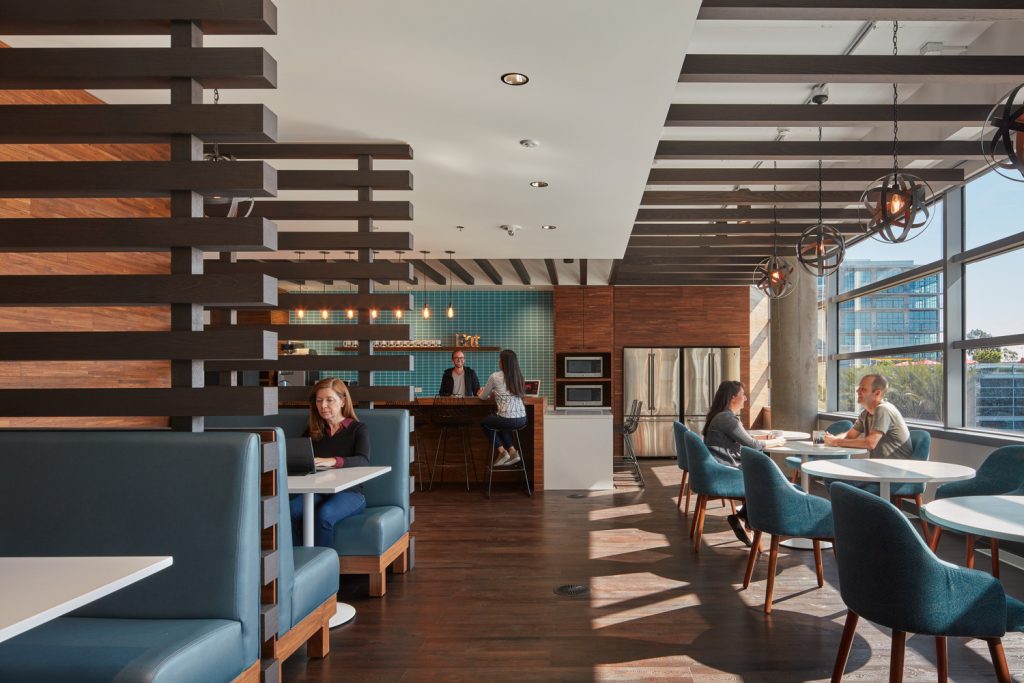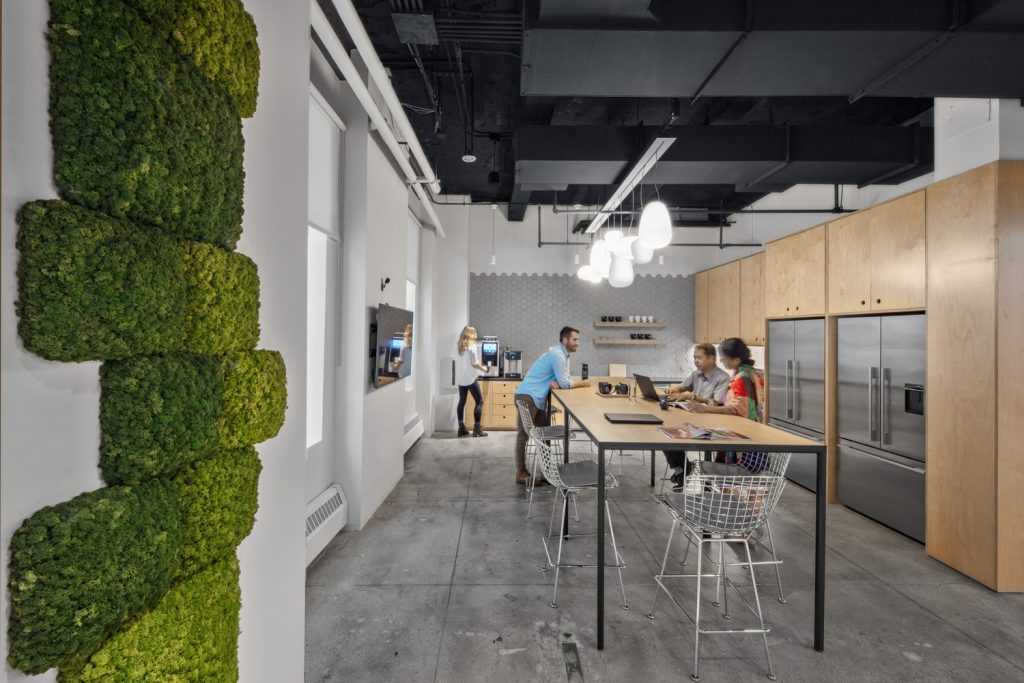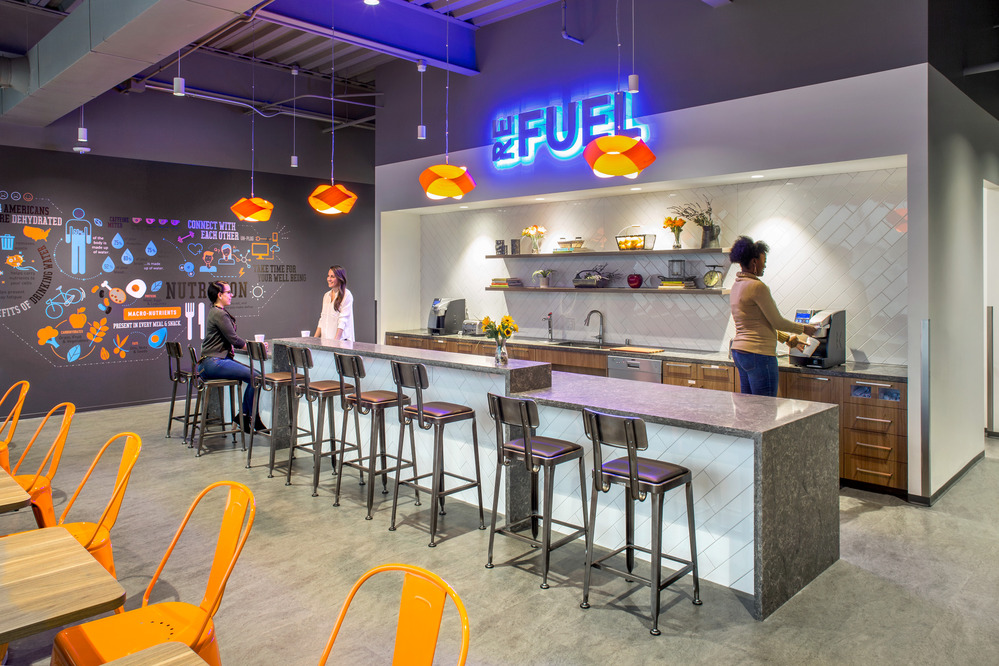by Sharifa Nelson — January 2019 — The specific building knowledge of the Facilities Manager (FM), who is brought in as early as Schematic Design (SD) as a key stakeholder in real estate projects, can prevent longer-term constraints with on-going maintenance and employee/user adaptability to the new space. Depending on the size of a company’s real estate group, either the FM will oversee an office relocation/renovation or a separate design team will be established along with other cross functional teams such as Security, HR, and IT. In this situation, the FM may not be integrated into the project team until well after the Design Development (DD) is under way. However, if the FM is engaged as early as SD as a key player and is involved during key milestones throughout the entire project cycle, there is a more likely chance of project success.
Here are two important focus areas to consider:
1. FMs can assist with Employee/User Adaptability to the New Space
There is also a strong correlation between how well a space is received and how involved the right stakeholders are in the design phase. The FM can be the ultimate project champion starting in the planning phase through post-move because this person will likely be one of the first points of contact that fields concerns (i.e., for some the new open space may seem too loud, the lighting might feel too bright, or the temperature may feel too hot/cold). Adjustments need to be made in the days and weeks following move in, and oftentimes a lot of these issues subside, but the FM gets to know each of the business units and can assist to mitigate these concerns during the project.
FMs can point out key information that will be valuable to design teams when working around existing building conditions that might not be completely evident until after demolition is complete, while maintaining the look and feel that their client wants to achieve.
HVAC Systems & Open Ceiling Design
As an example, recently, a client wanted to incorporate an open ceiling in their new office design, but did not have the budget to replace the dated (and loud) HVAC system. The existing space had a combination of fan powered and VAV boxes with a mix of gypsum board and large ACT tiles. An acoustical consultant was brought in to run baseline testing and formulate recommendations based on the proposed design. For reference, as established by ASHRAE, the Noise Criterion (NC) is a single-number rating system corresponding to the steady-state background noise level within a space due to a building’s mechanical, plumbing, electrical, and elevator systems.
Aiming for a rating of NC-40 to NC-45 in an open plan is generally acceptable depending on the type of work function occupying the space. The acoustician pointed out that the new plan could cause the NC rating to shoot up to between NC-50 – 55 in particular areas due to the existing clustered fan powered boxes throughout the floor. To achieve a lower NC rating, the FM was able to work with the mechanical engineer to achieve a better mix of Fantom boxes in areas where the return was causing the loudest concern. The first phase would be the test case for the subsequent floors in the projects. Regardless of the system type (VAV vs. FPB, etc.) an open ceiling will create some added noise of air leakage, air flow, and breakout area noise but the FM in this case was able to propose an alternative that allowed the budget to be minimally affected while still being able to achieve the design goal.
Accessibility for routine maintenance
The competing needs of key stakeholders (i.e., the business needs vs. what the employee and the facilities team need) and the speed at which the project needs to be completed to meet occupancy deadlines can cause complications when the planning phase does not incorporate proper input from the FM. Decision making typically involves the budget holders and users of the planned space. Business unit stakeholders and employee representatives in each work function are engaged in the design planning stage for requirements gathering and overall design aesthetic input.
In some cases, there’s an overall point of contact for each business unit that is the liaison for their team and is responsible for providing information back to other decision makers for approval. This organizational structure can cause delays in the project and can be especially taxing when the liasons have their own daily priorities within their work function. However, this process often excludes the FM, who can provide some input regarding the functionality of the space and often addresses long-term issues like periodical and emergency maintenance.
2. FMs can help with Budget Decisions and Ongoing Maintenance
A large consideration in project planning and budgeting is on-going maintenance. This mainly applies to what is involved behind the scenes: keeping the completed space looking fresh and remaining comfortable and safe for employees. Certain budget decisions can have a direct impact on space performance and what the user experiences day-to-day. An example is working with an old raised floor system in office renovations.
Flooring Choices
Depending on the building, continued use of raised floor systems might be required. Depending on the company’s budget, a new raised floor system could be too expensive, so some may opt to reuse the existing system. It is crucial to consider how the flooring materials selected can impact on-going maintenance access and durability.
An easy way to warm up a space is to add in more wood, and a popular choice for new offices is Luxury Vinyl Tile (LVT). Keep in mind that although radiant LVT is a great option, the durability of carpet tile vs. LVT installed on top of an old raised floor system might cause issues with buckling and waviness as the foot traffic increases and the floor expands/settles with heat and sun exposure. Additionally, this option can cause difficulty for FMs who may need access to particular areas under the raised floor for emergency reasons. FMs typically identify key access areas. The consequence of not doing so can lead to replacing large sections of LVT, incurring additional, unnecessary expense.
Greenwall Systems
Similarly, aesthetically pleasing design features like green walls are absolutely beautiful and can provide enormous benefit to employees in the space as far as wellness is concerned. Some of these systems have intricate self-watering and auto adjusting lighting levels based on the type of plants used. Unless the FM has a “green thumb,” on-going maintenance contracts to keep the plants thriving and alive will have to be considered. As a recent example, a client opted for a few dormant moss walls vs a living green wall which served a similar aesthetic but at a lower maintenance cost.
High Traffic Coffee Bars/Cafés
Another consideration would be the durability and clean-ability of the materials selected in areas such as restrooms, pantries, and coffee bars/cafes. Peak times during the day will also cause high traffic flow so the thoughtful placement of the register, ordering area, and condiments will ensure a better flow through the space. During the design phase of café spaces, FMs should be present to weigh in on the average daily rushes during the mid-morning and afternoon coffee breaks, and how this might impact other issues such as egress safety and the occasional accidental spills.
Users that frequent these break-out areas may form their own patterns which could differ from the original design intent. Such movement near outside views, areas for conversation privacy, as well as time of day (for example rushing in between meetings or taking an actual break) should be considered. In a recent project, following move-in it was noted that the new café was heavily utilized. With this new information, the FM and design team collaborated and made simple adjustments after move in, including where the condiments were sitting on the bar which allowed users to move to another area to make their beverage without impeding others waiting for their order.
In conclusion, we know that every project is unique. If FMs, as early as the initial design phase on new renovation and relocation projects, have the opportunity to contribute their knowledge of the building as well as users of the space, they can have a positive influence on the space’s layout, create work plans, and identify on-going cleaning and specialty maintenance that may be required for unique design features. This makes FMs great champions to enhance user adaptability in new and renovated office projects.
About Sharifa Nelson
Sharifa Nelson integrates a unique expertise in asset management, process improvement, strategic communications, and change leadership – ensuring client visions are translated into adaptable designs that will have both short- and long-range results. In her current role, she is leading workplace design optimization and change projects from inception to completion at IA Interior Architects.





